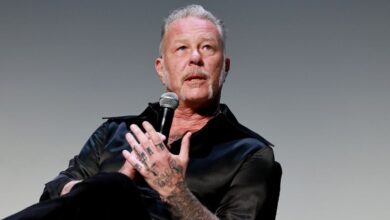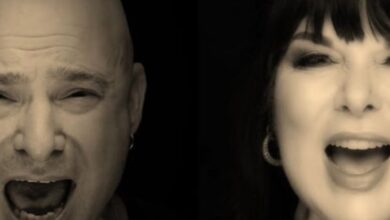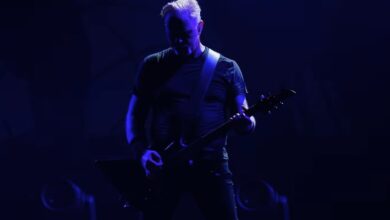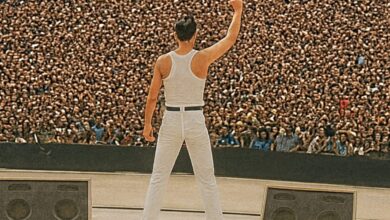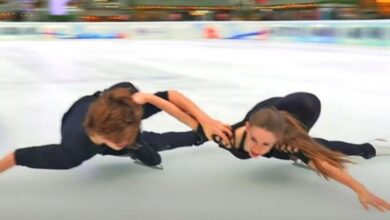Prince’s Purple Rain Super Bowl Halftime Show
On February 4, 2007, the biggest show in American sports paused for halftime in Miami Gardens—and the sky opened. Under a pounding rain at Dolphin Stadium, Prince stepped onto a stage shaped like his Love Symbol and turned weather, risk, and logistics into theater. The very fact of the downpour mattered: rain at a Super Bowl halftime had never happened like this, and the slick stage, tall heels, and live electric guitars made safety a real question. Yet the elements became part of the plot, amplifying mood and myth before a television audience counted in the hundreds of millions.
What unfolded didn’t feel like a medley so much as a short film edited in real time. Fireworks cracked, artificial lightning flickered, and then a stomp—Queen’s “We Will Rock You”—announced the tone. Prince shot into “Let’s Go Crazy” with the practiced precision of an arena general, but he treated the Super Bowl like a club set: fluid, tightly paced, and built to crest. He pushed and pulled sections to keep energy high while giving the cameras time to breathe, a director’s mind at work inside a guitarist’s stance.
The road to that 12-minute sprint had its own showmanship. In the week leading up to the game, instead of doing a conventional press conference, Prince held a mini-concert, hinting that he’d treat halftime as art, not publicity. Producers later recalled how the set had been mapped with tape during Vegas rehearsals because the symbol-shaped platform wasn’t available, and how, once on site, he refined movements with almost mathematical focus. Even the pitch meeting months earlier had a flourish: in a Los Angeles living room, he broke into a private performance that instantly closed the deal.
Setlist choices told you everything about his intent. He wasn’t stacking radio singles so much as building narrative. After the “We Will Rock You” intro and “Let’s Go Crazy,” he wove in “Baby I’m a Star,” flashed “1999” as a motif, and then pivoted hard into borrowed thunder: Creedence’s “Proud Mary,” Dylan-by-way-Hendrix with “All Along the Watchtower,” and—most surprising at the time—Foo Fighters’ “Best of You,” a nod to a band that had once covered his “Darling Nikki.” The closing chapter, of course, was “Purple Rain,” saved for the moment when story and weather would meet.
Halftime shows love scale, and Prince found it in people as much as pyrotechnics. He folded in the Florida A&M University Marching 100, whose luminous trim and choreography gave TV directors moving brushstrokes to cut across. The band’s accents under “Baby I’m a Star,” “1999,” and the finale welded HBCU pageantry to Minneapolis funk, translating stadium sprawl into crisp, graphic movement that read beautifully in the rain. It wasn’t just spectacle; it was counterpoint, letting a massed ensemble frame an artist famous for doing everything himself.
Visually, the stage did heavy lifting. Production designer Bruce Rogers’s symbol platform glowed like neon circuitry, camera cranes carving arcs above it while a translucent sail rose behind Prince at key points to catch his silhouette. In a medium obsessed with close-ups, he found ways to make widescreen images iconic: the tiny figure below the giant screen, the outline of a guitar neck cutting through mist, the marching band’s geometry drifting like constellations. The rain textured every shot, throwing halos around lights and turning drops into glitter.
And then there’s the line everyone remembers from backstage as kickoff to legend. With producers nervously checking gear and footing, word traveled up the chain: the artist wanted to know if they could make it rain harder. It’s a one-liner because it’s perfect: defiance, theater, and confidence in four words. Musicians later said the downpour was so intense that some equipment wouldn’t power back on after the show—fine, as long as it worked when the red light was live. In that framing, the storm wasn’t a problem to solve; it was a collaborator to direct.
Musically, he played with lineage and leverage. “Watchtower” let him channel the Hendrix vocabulary without imitation; “Best of You” recontextualized a 2005 alt-rock anthem as a gospel-tinged vow shouted into weather, a sly answer to the Foo Fighters’ earlier cover of him. “Proud Mary” folded Ike & Tina Turner’s churn into his show’s heartbeat, a history lesson disguised as party music. Through it all, his guitar tone cut like a lighthouse beam—sharp enough to etch melody in the rain, warm enough to keep stadium and living rooms in the same emotional key.
Performance craft kept danger beautiful. High-heeled boots on a wet acrylic stage demand choreography that looks effortless and plans for contingencies, and Prince’s dancers, the Twinz, glided with the kind of grip you don’t get by accident. Volunteers had assembled and rolled that stage on in pieces, a pit crew executing a moon landing in ninety seconds; at one point during setup, a lighting cable was reportedly crushed and a tech literally held the connection by hand until the last cue faded. Every immaculate frame had a small army behind it.
Television always needs a talking point, and the silhouette sequence during “Purple Rain” briefly gave the FCC mailroom some work—proof that even when he dialed down provocation, Prince couldn’t help but be interpreted as dangerous. But the image that endured wasn’t controversy; it was a figure alone with a guitar behind a sheet, lines bled purple by water and light. Iconography, not outrage, is why the clip still circulates each January as shorthand for how to win halftime: pick a story, commit to it, and make the camera fall in love.
Critics, not usually an easy bunch on Super Bowl Sunday, surrendered. The New York Times called it one of the most thrilling halftime shows ever—unpredictable and perhaps the best—and the Chicago Tribune praised the way he justified the existence of a “mini-concert” between halves, something many writers had long rolled their eyes at. It was a reminder that craft and risk could coexist in a corporate behemoth, and that the right artist could bend the country’s biggest TV platform into a stage sized exactly for him.
There was a measurable afterglow, too. In the week following the performance, Prince’s catalog saw a pronounced bump: physical albums up into the thirty-thousand range, digital tracks well past the hundred-thousand mark, Amazon sales reportedly surging several multiples. Those numbers don’t explain magic, but they confirm what living rooms felt: a short set reactivated old love and minted new fans. Super Bowl platforms are transactional by nature; this one felt transformational, and the marketplace reacted accordingly.
What’s striking in hindsight is how much he gave away. With only twelve minutes to spend, Prince devoted precious time to covers, effectively sharing the spotlight with Queen, CCR, Dylan/Hendrix, and the Foo Fighters. That generosity doubled as narrative structure: an arc from rock canon to his own bookend in “Purple Rain,” where authorship and weather merged. The choice said, quietly, that the show wasn’t about promotion. It was about lineage, taste, and a musician’s joy in rearranging pieces of the puzzle until they clicked.
From the vantage point of TV production, it reads like a master class in framing risk. The rain increased the chance of slips, shorts, or bad camera fog; the response was tighter blocking, more deliberate camera paths, and an emphasis on silhouettes and wide frames that turned water into character. Where another artist might have retreated into safe angles and lip-synced distance, Prince trusted the band, the steadicam operators, the crane ops, and the edit truck to paint big even when conditions shrank margins.
Ask fans what they remember and they’ll point to the closing minutes. The stadium lights cooled to a bruised violet, ponchos glistened like scales, and the first chords of “Purple Rain” rolled out with the kind of inevitability that makes hair rise. It’s hard to overstate how perfect the coincidence felt: a song that had always sounded like weather sung into actual weather, each “woo-hoo-hoo” volleyed off thunder and a million at-home harmonies. When the final note trembled, fireworks stitched a coda across the wet air and the camera drifted upward, as if the only way to exit was ascent.
Legacy arrived fast and never left. In the years since, outlets and fans routinely rank the set at or near the top of halftime history, and each new show is measured against the bar he set: was it as smart, as musical, as cinematic, as fearless? The answer rarely changes. More than a virtuoso reel, Super Bowl XLI demonstrated how a pop moment can hold multitudes—HBCU tradition and glam guitar, classic-rock vocabulary and gospel shout, intimacy and mass spectacle—without feeling crowded or compromised. It made the case that halftime can be art when an artist insists.
In the end, the most telling detail might be that cheeky backstage question. “Can you make it rain harder?” isn’t just a quip; it’s a mission statement. Don’t dodge the uncontrollable; direct it. Don’t shrink from the broadcast’s demands; shape them. Don’t worry about whether a twelve-minute medley can carry weight; give it narrative spine, musical muscle, and one indelible visual, then let the elements finish the sentence. For one soaked night in Miami, the weather obliged—and Prince answered with the kind of show people still talk about in superlatives.
@80sdeennice Prince sings “Purple Rain” (in the rain) in the greatest Super Bowl halftime show of all time 💜 ☔️ When the producers approached Prince before the set to warn him about the rain, he responded, “Can you make it rain harder?” #GOAT #SuperBowlXLI #2007 #prince #80sicon #80s #genx #80smusic #ilovethe80s #80skid #halftimeshow #purplerain #foryoupage ♬ original sound – 80s Deennice
